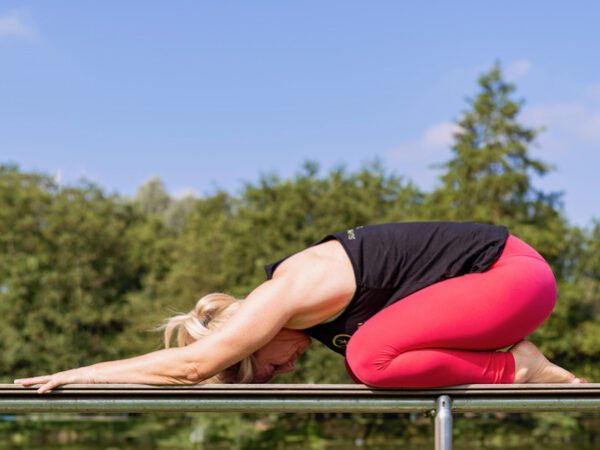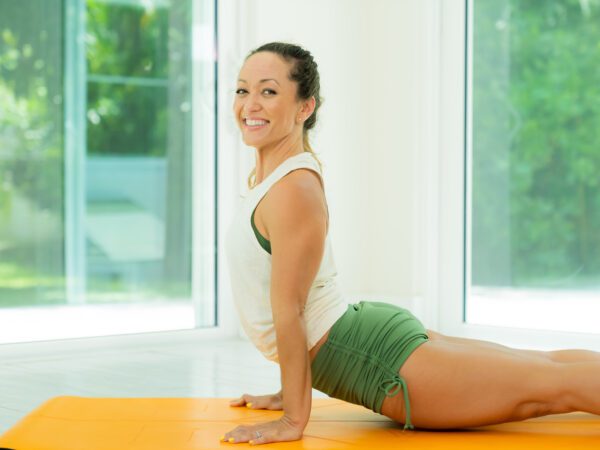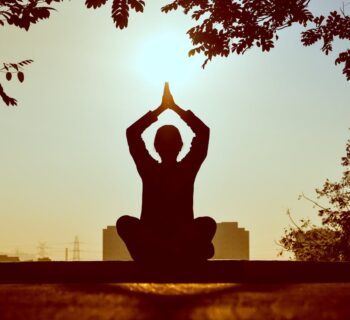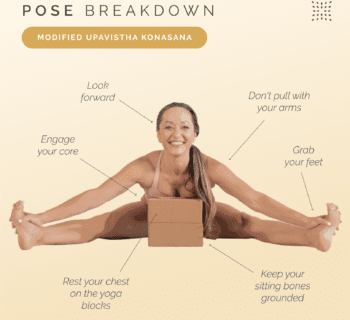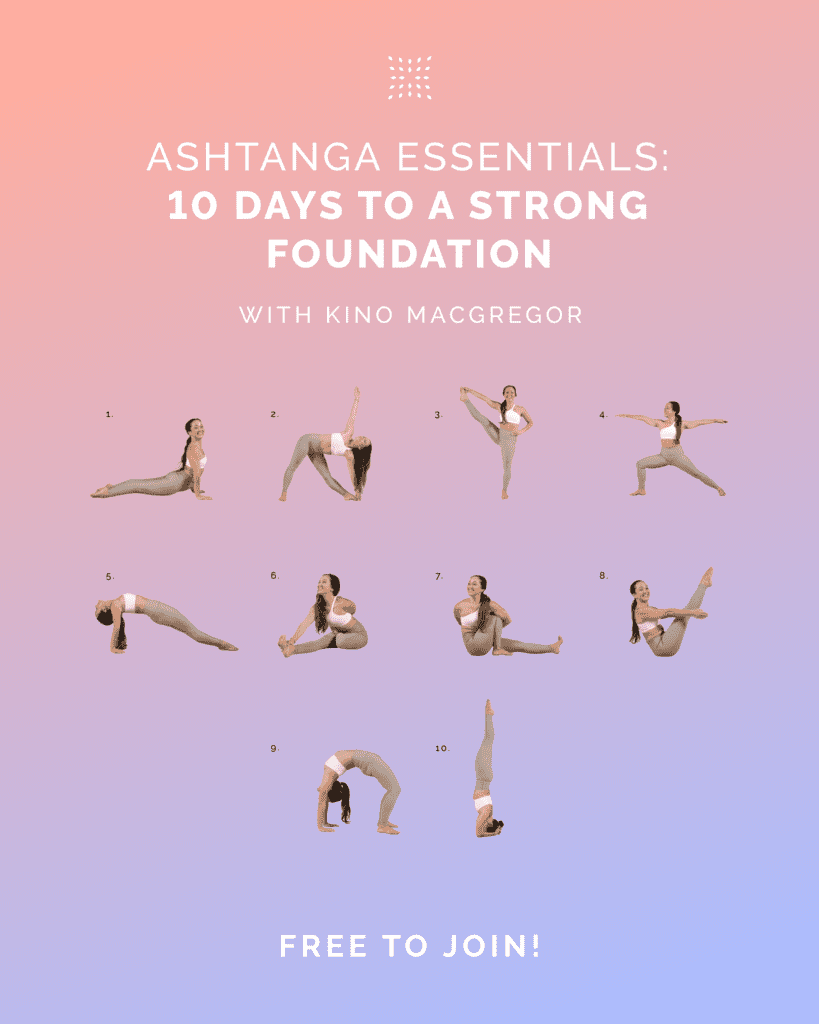Inversions challenge gravity. They require skill, bring extraordinary benefits, and must be approached with respect.
Defy the ordinary.
Turning your world upside down is more than a metaphor in yoga. It’s a transformative practice that pits serenity against gravity.
Understanding Yoga Inversions
Yoga inversions are postures that elevate the heart higher than the head. This counter-intuitive position redefines our relationship with gravity, often leading to numerous health and spiritual benefits.
In the yogic process, poses like sirsasana (headstand) or adho mukha vrksasana (handstand) are not mere physical feats; they are acts of humility and balance. They teach us to find steadiness in the inverted, cultivating clarity and a new perspective that can change the way we look at our practice.
The terms “upside-down” and “inverted” echo notions of reversal and reflection, perfectly embodying the essence of these transformative asanas.
Defining Inversions
Inversions in yoga entail postures that elevate the heart above the head, defying gravity and invigorating the practitioner with a fresh perspective.
Inversions stimulate the nervous system, promoting mental clarity, and are essential for a balanced yoga practice.
By flipping your world upside down, inversions introduce you to a world of benefits—from increased circulation and improved focus to fostering a sense of inner balance and calm. Inversions can help bring order to our chaotic thoughts.
With regular practice, each permutation of these asanas can be a gateway to enhanced well-being, challenging both the body and mind while harnessing the power of gravity to revitalize and rejuvenate.
Benefits of Going Upside Down
Inversions are more than acrobatics; they’re a pathway to improved wellness.
Enhanced Circulation: Inversions such as sirsasana (headstand) encourage venous return with an emphasis on improving cardiovascular health.
Increased Mental Clarity: By altering blood flow to the brain, inversions can boost cognitive functions and concentration.
Stress Relief: Practices like viparita karani (legs-up-the-wall pose) are known to activate the parasympathetic nervous system, promoting relaxation.
Lymphatic Drainage: Going upside down facilitates the movement of lymph, aiding in detoxification and immune function.
Improved Balance: Practicing these poses at regular intervals challenges proprioception and equilibrioception, enhancing physical coordination and balance.
Core Strength: Many inverted poses engage the abdominal muscles, contributing to a strong and stable core. They require the triads of strength, flexibility, and balance.
Increased Body Awareness: As you navigate space differently, you become more attuned to your body’s alignment and subtleties.
Refreshed Perspective: Psychologically, invert your view of the world can lead to new insights and emotional balance.
The gravity-defying nature embodies resilience and adaptability.
These asanas, over time, contribute to a profound transformation in body, mind, and spirit.
Preparing for Inversion Practice
Before embarking on the journey of inversions, grounding the body in foundational poses is indispensable. Beginning with a series of asanas that warm up the spine, shoulders, and hamstrings creates a supportive environment for an inversion practice. Establishing a routine that integrates sun salutations and standing poses fortifies the muscles and awareness required to support one’s body when upside down, laying the groundwork for a safe and successful experience.
Ensuring alignment and understanding the mechanics of each posture are critical steps in preparing for inversions. One must cultivate “active feet,” engaging the legs fully, and develop a solid hand or forearm foundation, depending on the inversion. This activation creates a stable base from which to lift the body. Moreover, practicing against a wall or with the assistance of a knowledgeable instructor can instill confidence and provide the necessary support as one acclimates to the new perspective and demand of inversions.
Safety Measures
Always consult with a healthcare professional.
In preparation for inversion poses, it’s essential to assess your body’s current state. Particularly for individuals with specific health concerns—such as high blood pressure, heart conditions, or a history of strokes—it is crucial to obtain clearance from a healthcare provider before proceeding with inversion practices. Additionally, pregnant individuals or those recovering from recent surgeries should exercise abundant caution and usually abstain from such practices.
Use props and supports judiciously.
Stabilize your environment with the right props. When attempting inversions for the first time—or to enhance safety in your ongoing practice—it’s advisable to use walls, yoga straps, blocks, and even spotter assistance to ensure a safe and supported inversion experience. This infrastructure is paramount in avoiding undue strain and facilitating the correct positioning of the body.
Avoid inverting with a full stomach.
Maintain awareness of your physical limitations. It’s important to recognize and honor your body’s signals and limitations. Attempting complex inversions without proper preparation or awareness can lead to injury. Therefore, give yourself the necessary time and space to learn and grow within your practice while preserving your well-being.
Stay mindful of your exit strategy.
Know how to safely exit inversions. As you nurture your practice with inversions, be diligent in knowing how to safely and smoothly transition out of the posture. This knowledge is critical in preventing sudden falls and the potential injuries that can occur with improper disengagement from inverted positions. Stay updated with the most current safety protocols and techniques, ensuring your practice remains a healthy and enriching activity.
Essential Warm-ups
Before attempting yoga inversions, it’s imperative to engage in a series of warm-ups. These preparatory movements help to increase blood flow and pliability in the muscles, reducing the risk of injury.
Dynamic stretches, such as cat-cow transitions, are essential to limber up the spine. Similarly, gentle neck rolls alleviate tension and prepare the cervical vertebrae for weight distribution in inversions like headstands.
Surya namaskar, or sun salutations, is a comprehensive warm-up sequence that dynamically engages the whole body. Through its cyclical nature, it builds heat, syncing breath with movement, an invaluable practice before inverting.
Shoulder and wrist joint rotations are non-negotiable when prepping for poses like handstands. These rotations enhance joint lubrication, which is critical in bearing the body’s weight and avoiding undue pressure.
Remember, without adequate warm-up, diving into inversions can be detrimental. Prioritize a thorough preparation to ensure a secure and beneficial inversion practice.
Key Inversion Poses to Start With
For newcomers to inversions, it’s wise to start with more accessible poses such as downward-facing dog (adho mukha svanasana) and legs-up-the-wall (viparita karani). These provide the benefits of reversing blood flow without the full brunt of supporting all your weight on your hands or head, allowing you to gradually build strength and gain confidence in the practice.
Moving on to supported shoulderstand (salamba sarvangasana) introduces additional challenge and inversion benefits. Precise alignment and the use of props help mitigate risk, making it a recommended progression for those developing their inversion practice.
Beginner-Friendly Shoulder Stand
Shoulder stand, or salamba sarvangasana, can be a gateway into the exhilarating world of inversions. For novices, it’s a gentle start, yet still extends the invaluable benefits of inversed postures. Its accessibility and modifiability make it a staple in yoga routines.
Approaching the pose with care is crucial for safety and effectiveness. Build the foundation with bolstered support for the shoulders using blankets or a yoga mat.
When positioning for shoulder stand, ensure your hands support your lower back, providing a stable base. Delicate neck alignment is paramount; never turn your head whilst in the posture. The goal is to create a straight line extending from the shoulders to the feet.
Incorporating a milder version, such as the half-shoulder stand, facilitates a gradual training of the muscles and awareness required for the classical version. For many practitioners, this pose represents an initial step towards more advanced asanas. Moreover, it allows for an introduction to the invigorating sensations and circulation benefits characteristic of inverted poses without overwhelming beginners.
Progressing to Headstand
Embarking on the headstand journey starts with establishing a sturdy tripod base, where both palms and head equally share the weight. Mastery over your core is essential here.
Start with dolphin pose to strengthen shoulders and prepare for inversion. Practice lifting one leg, then the other.
Gradually introduce the tripod headstand by placing the crown of your head on the mat, and your hands shoulder-width apart, forming a triangle. Lift your hips high, walk your feet closer, and pause here to build comfort and strength.
Only when you feel solid in this preparatory stage should you attempt to raise your legs. Utilize a wall for support initially, ensuring your core engenders the lift, not momentum. Over time, develop balance and control, aiming to remove the crutch of the wall. Remember, this is a practice of patience—do not rush the process. Trust in the journey, honoring each stage, from Dolphin to the full expression of Headstand.
Enhancing Your Inversion Experience
To fully embrace the world of inversions, it is pivotal to cultivate an environment that nurtures progress and safety. Begin by selecting a quiet space, devoid of distractions, where you can practice consistently. Ensure you have a quality, non-slip yoga mat and, if needed, supportive props such as yoga blocks, straps, or a bolster. These can aid in achieving the correct alignment, deepen your practice, and offer support where necessary.
In novices and seasoned practitioners alike, the mindset plays a crucial role in enhancing the experience. Approach your inversion practice with an open heart and a willingness to learn, not just from successes but from every attempt. Engage with the rhythm of your breath as it guides you through transitions and holds. Remember, inversions are not merely physical feats; they are opportunities for mental growth and introspection. With each lift, you challenge gravity, instilling a sense of resilience and perspective that reverberates beyond your mat.
Overcoming Common Challenges
Engage core strength and practice patience; with time, inversions become accessible. Remember, persistence and gradual progression are key, and each practice session is a step closer to achieving your goals in inversions.
Fear of falling can inhibit progress in inversions. Address this by using a wall for support.
Building upper body and core strength supports stability in inversions. Integrating exercises (planks, push-ups, and core workouts) accelerates progression.
Acknowledge and work with your unique bodily dimensions. Adaptations can be made using props which can facilitate the proper positioning.
Seek guidance from experienced instructors, especially when transitioning to more complex inversions, ensuring safety and a deeper understanding of the nuances within each pose.
Consistent practice and mindful reflection after each session reveal progress over time, encouraging continued dedication to your inversion journey.
Incorporating Props and Variations
Props offer valuable support, enabling you to explore inversions with confidence and safety.
Firstly, introducing props can be transformative to your inversion practice. Blocks, straps, bolsters, and even chairs serve as tools that facilitate alignment, create space, or add stability. For beginners, a wall is an indispensable ally, offering a secure element to lean into or rest upon as you cultivate balance and strength. Advanced practitioners can use props to deepen poses, inviting a refined exploration of edges and angles seldom reached through traditional practice.
Secondly, variations in inversions cater to a wide spectrum of capabilities and objectives. Whether your goal is to strengthen your body, enhance concentration, or simply enjoy the rejuvenating effects of being upside down, there’s an inversion variation that’s right for you.
The use of props encourages creative expression within your practice. They allow for a modulation of intensity – whether dialing up the challenge with fewer points of contact or granting a restorative experience with ample support. Acknowledging and respecting the body’s inclinations during each session builds a sustainable and rewarding inversion practice.
Finally, exploring variations with props is a doorway to understanding the subtleties within your practice. It opens your mind to the possibilities beyond a static pose, melting away the rigid boundaries of traditional postures. These explorations often lead to surprising insights about alignment, muscular engagement, and even emotional release, revealing undiscovered layers to your practice that enrich the mind-body connection.
Are you looking for more guidance on your yoga journey? Sign up for Omstars to get access to thousands of yoga classes in the comfort of your own home. Click here to start your subscription.
Photo by Adam Thomas on Unsplash



